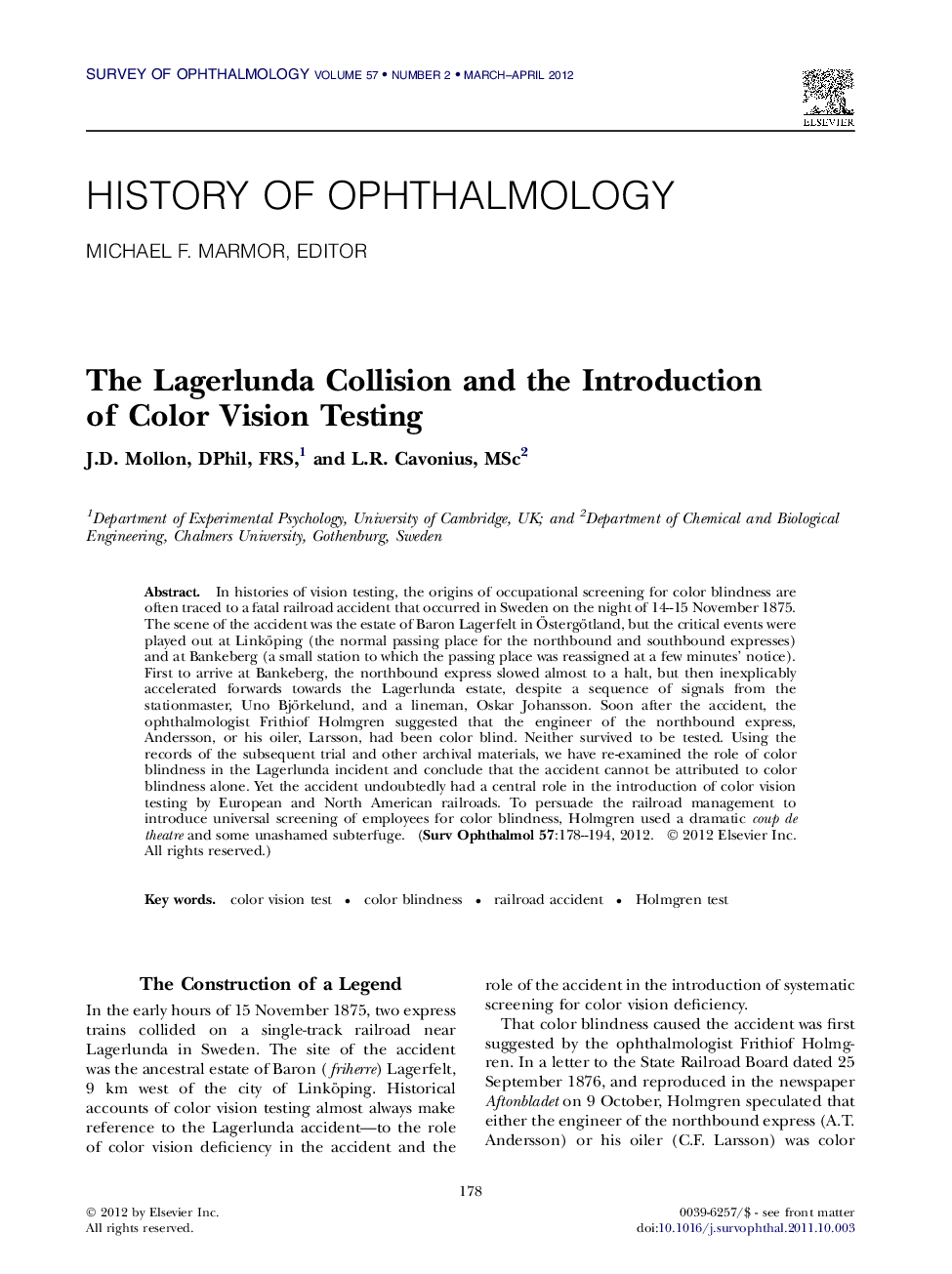| Article ID | Journal | Published Year | Pages | File Type |
|---|---|---|---|---|
| 6202841 | Survey of Ophthalmology | 2012 | 17 Pages |
In histories of vision testing, the origins of occupational screening for color blindness are often traced to a fatal railroad accident that occurred in Sweden on the night of 14-15 November 1875. The scene of the accident was the estate of Baron Lagerfelt in Ãstergötland, but the critical events were played out at Linköping (the normal passing place for the northbound and southbound expresses) and at Bankeberg (a small station to which the passing place was reassigned at a few minutes' notice). First to arrive at Bankeberg, the northbound express slowed almost to a halt, but then inexplicably accelerated forwards towards the Lagerlunda estate, despite a sequence of signals from the stationmaster, Uno Björkelund, and a lineman, Oskar Johansson. Soon after the accident, the ophthalmologist Frithiof Holmgren suggested that the engineer of the northbound express, Andersson, or his oiler, Larsson, had been color blind. Neither survived to be tested. Using the records of the subsequent trial and other archival materials, we have re-examined the role of color blindness in the Lagerlunda incident and conclude that the accident cannot be attributed to color blindness alone. Yet the accident undoubtedly had a central role in the introduction of color vision testing by European and North American railroads. To persuade the railroad management to introduce universal screening of employees for color blindness, Holmgren used a dramatic coup de theatre and some unashamed subterfuge.
